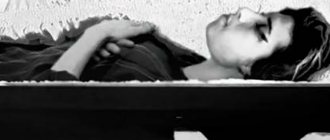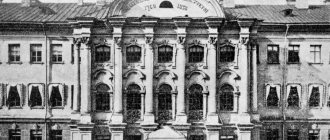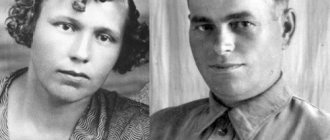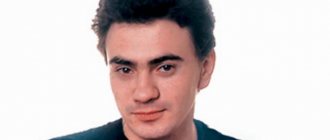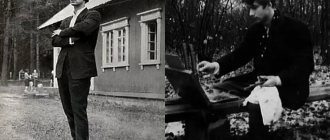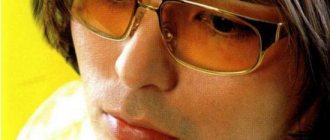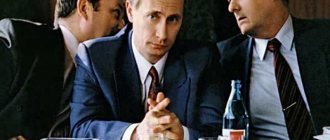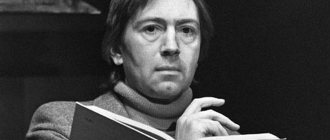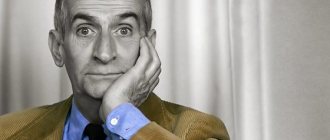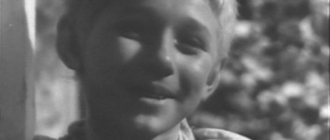Full name: Ernest Miller Hemingway
Date of birth:
July 21, 1899
Zodiac sign:
Cancer
Age:
61 years
Place of birth:
Oak Park, Illinois, USA
Date of death:
July 2, 1961
Occupation:
Writer, journalist
Height:
183 cm
Marital status:
Married
Spouse a):
Mary Hemingway, Martha Gellhorn, Pauline Pfeiffer
Children:
Patrick Hemingway, Gregory Hemingway, Jack Hemingway
Parents:
Grace Hall Hemingway, Clarence Edmont Hemingway
Ernest Hemingway - biography
Ernest Hemingway is a famous writer and journalist with a worldwide reputation. All schoolchildren in the Soviet Union knew this writer. All lovers of foreign literature were interested in him. In 1954 he was awarded the Nobel Prize. The most famous literary magazines published the works of the master. Ernest's real fame came from his works: “The Sun Also Rises”, “For Whom the Bell Tolls”, “The Old Man and the Sea” and others. In general, the writer’s bibliography includes more than 50 works by the famous writer.
Ernest Hemingway's Demons
He seemed to those around him the embodiment of masculinity. At his instigation, beards, coarse knitted sweaters and military trousers became fashionable among Americans, and after them among Europeans. This was Ernest Hemingway’s signature style, which even reached the closed USSR.
When Hemingway's father committed suicide at the age of 58, his mother and sons decided that he could not stand the torment associated with the effects of diabetes. A doctor by profession, he knew very well what the onset of pain in the legs caused by tissue death led to. One day, after a long attack, Dr. Hemingway shot himself with a hunting double-barreled shotgun. An elderly man is tired of fighting the disease. The family grieved the loss, but no one could have imagined that Ernest Hemingway would repeat the fate of his father and commit suicide. And after him, the writer’s younger brother Lester and Ernest’s granddaughter, fashion model Margot.
Young Hemingway. (wikipedia.org)
By the time of Hemingway Sr.'s suicide, Ernest had become very distant from both parents. The cooling in the relationship began after their son sent them his first long-awaited book of stories from Paris. The father sent all the copies back to the publishing house, and wrote to Ernest that he did not want to have such an abomination in his home. The fact is that the heroes of the stories spoke just like ordinary people and sometimes even cursed. And one of the characters - oh horror! - was sick with gonorrhea. Talking about this in America at that time was tantamount to admitting to desecrating graves or setting fire to an orphanage.
However, readers did not share the opinion of Hemingway’s parents: the writer’s fame grew. This was facilitated not only by talent, but also by Ernest’s lifestyle. The public perceived him as a hero. All of Paris knew that during the war Ernest, who was wounded, carried his exhausted comrade. He was wounded again while dragging his friend on himself, but lost consciousness only after delivering him to his own. The writer went through three wars, hunted lions and often went out into the ocean on his yacht “Pilar” during the worst storms, when fishermen preferred to wait out the bad weather on the shore.
But what was behind this unbridled desire for risk? According to his second wife, Pauline, Hemingway was already prone to depression and sometimes spent whole weeks alone.
A few years later, while vacationing in Cuba, the couple met 22-year-old Jane, the wife of the head of the Havana branch of Pan American. An affair began between Ernest and Jane. The whole town was talking about the couple; the two raced wildly in their cars. Sometimes they picked up random passengers to enjoy the fright of the poor fellows, who prayed for God's sake to slow down.
Jane enthusiastically talked about these adventures to her psychoanalyst. After analyzing the writer’s behavior, he wrote an article in which he argued that the writer’s obsessive desire to put his life in danger could be a consequence of neurosis. According to the doctor, Ernest was haunted by memories of the war. The writer transferred them to his books, but could not get rid of them - every year they became more and more painful, pushing Hemingway to do strange things.
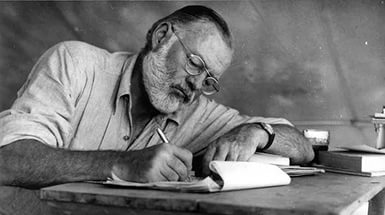
At the table. (wikipedia.org)
Even then, Papa Ham, as everyone called him, was thinking about how exactly he would die. And his father’s way did not seem so unacceptable to him. Sometimes the writer even demonstrated to his friends how this should happen. He sat in a chair with a hunting carbine, put the muzzle to the sky and pressed the trigger with his toes. The weapon was not loaded, but witnesses to the scene were still shocked. The writer explained that the sky is very soft and the bullet will definitely reach the target.
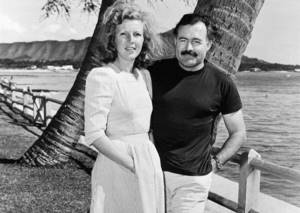
With third wife Martha Gellhorn. (wikipedia.org)
According to relatives, Ernest Hemingway drank up to one and a half liters of whiskey a day. Endless drinking, careless friends, partying too long. It’s funny that it was precisely for this lifestyle in the book “A Holiday That Is Always With You” that Ernest condemned Scott Fitzgerald and his wife Zelda. When the writer suffered from infectious hepatitis, the dose of alcohol had to be reduced to 50-100 grams.
Ernest was terrified; it seemed to him that without alcohol he would not be able to write. However, it was during this period that one of his best books was created, “The Old Man and the Sea,” for which he received the Nobel Prize.

With a double-barreled shotgun. (wikipedia.org)
At the same age as his father, the writer began to strive towards death quite definitely. The severe depression from which he suffered was compounded by persecution mania. It seemed to him that the special services were watching his every move and tapping his phone. Within two days, he made two suicide attempts.
But every time Hemingway took up a gun, his fourth wife Mary was nearby. Under her pressure, he agreed to undergo electroshock treatment, undergoing more than sixty painful procedures. After discharge, the writer’s condition was terrifying: he could not coherently write a few lines of official congratulations. And at 62, Hemingway pointed the double-barreled shotgun to the sky and pulled the trigger.
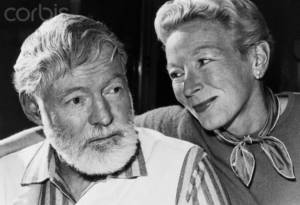
With his fourth wife, Mary Welsh. (wikipedia.org)
The writer seemed to those around him an unbending, courageous man. Not only his books, but also his image aroused admiration. In fact, the brilliant creator, who thought much more broadly than his generation, deeply experienced the internal drama. And thousands of Hemingway admirers were probably much happier than he was.
Childhood and youth
Ernest Hemingway, born near Lake Michigan on July 21, 1899, near Chicago, but in a provincial city in a large family.
The parents had six children who were raised in prosperity. Mother Grace Hall played in the theater, and father Clarence Edmont was a doctor. In his childhood, the boy did not think about a literary biography. From the age of three, he went fishing, hunting, and hiking with his father. This is where the love of nature came from in many of the works of the adult writer Hemingway. At school, Ernest was assigned to write notes about all the events held in the school newspaper. The boy played football, boxing, and was fond of swimming. Boxing did not bring him much pleasure in the future: his left eye could no longer see, and his left ear was damaged. These consequences of injuries caused the guy to refuse military service.
When the time came to choose a profession, Ernest already passionately wanted to connect his future biography with writing. The father dreamed of a medical career for his son. The mother decided that her beloved child would become Schubert or Beethoven. After graduating from high school, young Hemingway got a job at a Kansas city newspaper as a police reporter.
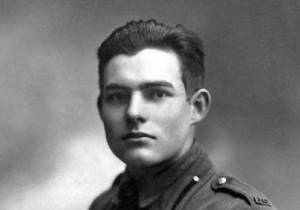
He became acquainted with all the dirt and negativity of city life, which he later successfully used in his works. Ernest became a participant in military battles, after which he left for Canada and again began working as a journalist. The son finally quarreled with his mother and left his parents' home forever. After some time, he settled in Paris.
Details from the life of Ernest Hemingway
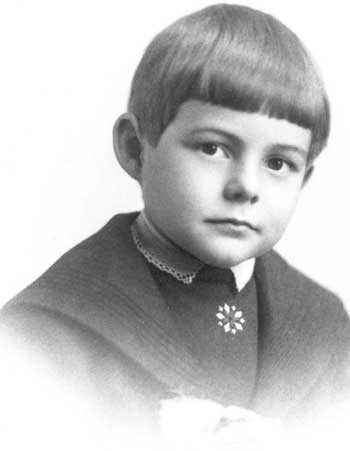
Ernest Miller Hemingway was born on July 21, 1899 in the suburb of Chicago, the village of Oak Park, Idaho, USA. He was one of six children of a respectable married couple, physician Clarence Hemingway and opera singer Grace Hall. who devoted her entire life to raising children. Ernest was brought up in a strict Victorian manner, was closer to his father, who instilled in the child from an early age a love of the forest, fishing, and hunting. Ernest Hemingway's mother was not particularly interested in housekeeping, so there were always many assistants and nannies in the house.
Hemingway was a bright student and performed well in school. He was fond of boxing and spent a lot of time hiking and forays into nature. When Ernest turned 12 in 1911, his grandfather gave him a single-shot shotgun. This gift strengthened the friendship between grandfather and grandson. Since then, Hemingway's main passion has been hunting. After graduating from school, much to the regret of his parents, Ernest did not go to college. And he left for Kansas City, dreaming of one day going to the front of the First World War. However, he was never accepted into the army. The cause was myopia. Having moved to Italy, he found himself on the front line in the very center of events. While rescuing the Italian, Hemingway came under machine gun and mortar fire and was seriously wounded by a mine fragment, but thanks to the efforts of doctors, he survived. Ernest Hemingway later went through the Spanish Revolution and World War II. In the intervals between wars, he wrote his legendary works and managed to receive worldwide recognition and the Nobel Prize.
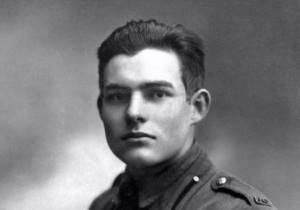
The great writer constantly played with fate. Twice Ernest Hemingway was seriously injured while hunting and almost burned to death in a forest fire. Participated in bullfights and bullfights. He survived such serious diseases for those times as skin cancer, anthrax, anemia, malaria, diabetes, hepatitis and pneumonia. Survived two plane crashes. His kidney and spleen were ruptured, the base of his skull was broken - the vertebra successfully fused, allowing him to avoid paralysis.
Literature
In France, the writer was helped in his literary activities by the owner of a bookstore, Sylvia Beach. She had an influence on literary critics. The writer Gertrude Stein also provided patronage to the aspiring writer; she persuaded Ernest to leave journalism and become a real writer. The novel “The Sun Also Rises” brought real fame to Hemingway.
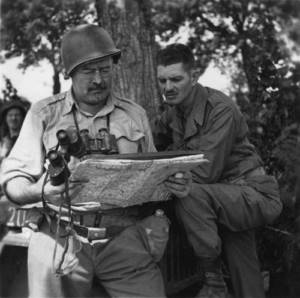
The main character of the work fought, was injured, began to relate to the world around him differently, and began to drink. Three years later, the author published the classic novel “A Farewell to Arms!” Ernest later created the immortal novel For Whom the Bell Tolls. Since 1949, the writer moved to Cuba, where the philosophical story “The Old Man and the Sea” appears. This story brought Hemingway two prizes, one of them the Nobel Prize.
Personal life
Hemingway had many love affairs in his life, reckless rash acts, and even more.
In a bullfight his opponent was a bull, and in another fight a real lion. This gave him weight in the eyes of women, and the fair sex constantly amazed him with their sophistication of manners and beauty. Biographical facts indicate that Ernest had many affairs, civil and legal marriages. The first time young Ernest fell seriously in love was when he was in the hospital, wounded on the battlefield of the First World War. Nurse Agnes cared for the writer, was older than him, but agreed to marry him. The wedding did not have time to take place, as the girl fell in love with the lieutenant. For the second time, the writer fell in love with a pianist eight years older than himself. Elizabeth became Hemingway's wife, always helped him in his profession, and gave him a typewriter. The young family lived in Paris, there was little means of subsistence, but love reigned in this union. Soon their son John was born.
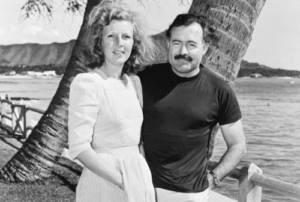
Ernest did not deny himself the pleasure of spending time in the company of friends; he often visited cafes and restaurants, made acquaintances with women, but was faithful to his wife. Unfortunately, Elizabeth had an unscrupulous friend, Paulina, who did everything to ensure that the writer divorced his wife. The marriage with this woman did not bring happiness to Ernest, but gave him two sons, Patrick and Gregory. For the third time, the Nobel Prize winner married correspondent Gellhorn. This marriage did not last long, since Martha was a strong and powerful woman and did not allow herself to be commanded.
For the fourth time, the writer tests his luck by marrying the journalist Mary, who has done a lot for her husband, becoming not only a wife, but also the personal secretary of her beloved husband. It was difficult for Mary to survive Ernest’s late love for a girl of aristocratic origin and thirty years younger than him, but the wise wife did not create scenes of jealousy and scandalous divorce.
Childhood and youth
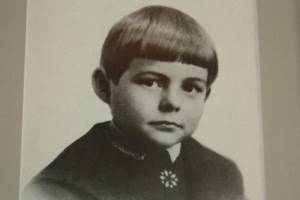
Ernest Miller Hemingway was born in Oak Park, Illinois, USA on July 21, 1899. He was the second child of Grace and Clarence Edmonds (Ed) Hemingway. Ed was a GP and Grace was a music teacher and opera singer. Ernest grew up with four sisters. As a young man, the writer lived with his family in northern Michigan. The young man enjoyed village life, went fishing and hunting with his father, and fell in love with nature with all his soul.
The mother of the future writer sought to teach her children to play musical instruments and instilled in her son a love of art. In high school, Ernest edited the school newspaper, played cello in the orchestra, and competed on the football and swim teams. After graduating from Oak Park High School in 1917, he went to work as a reporter for the Kansas City Star newspaper. Hemingway began to develop his simple, concise writing style, which would become his signature.
The young man, after a quiet six months in Kansas City, was hungry for adventure. Unable to enlist in military service due to poor eyesight, in 1918 he volunteered to become a Red Cross ambulance driver in Italy. While on duty, Hemingway was seriously wounded in both legs and underwent several operations. As the first American to suffer casualties in the war on Italian soil, he was awarded the Italian government's Bronze Star medal.
While being treated in a Milan hospital, Hemingway met and fell in love with Agnes von Kurowski, an American Red Cross nurse. The young people planned to get married when they earned enough money. After the war, in November 1918, the writer returned home. The long-awaited wedding never took place. Agnes informed Hemingway in a letter that the relationship was ending. Devastated, he became depressed.
Last years, death
Hemingway was very often on the verge of death.
Because of his love of travel, he was in five accidents and survived seven disasters. Many bruises, a huge number of fractures and concussions had to be treated. He was overtaken by anthrax and suffered from skin cancer. Malaria tried to take him to another world. Before his death, he was treated for hypertension and diabetes in a dispensary for the mentally ill; recently Ernest suffered from persecution mania. His health deteriorated every day; the writer, after thirteen courses of therapeutic procedures with electric shock, became unable to write, and then to think. He began to think about suicide and shot himself in 1961.
